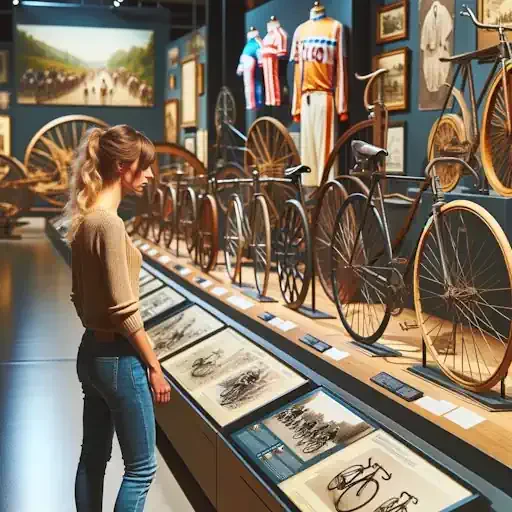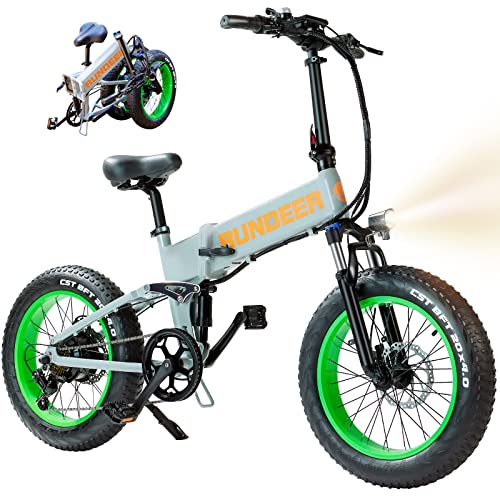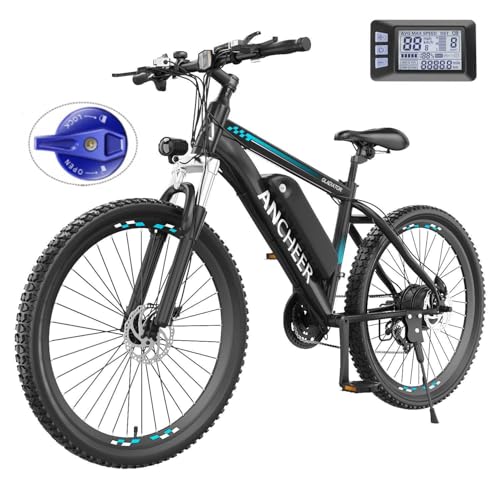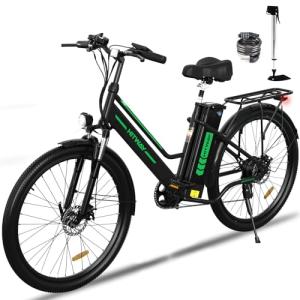A Brief History of Bicycles
Introduction
Bicycles, with their elegant simplicity and efficient design, have been an integral part of human transportation for centuries. Delving into the rich tapestry of their history reveals a story of innovation, perseverance, and the relentless pursuit of mobility. From humble beginnings to becoming a global phenomenon, the evolution of bicycles mirrors the evolution of human society itself.
Early Origins and Inventions
The roots of the bicycle trace back to ingenious contraptions devised by inventors and visionaries throughout history. From Leonardo da Vinci's sketches of rudimentary self-propelled machines in the 15th century to the first known bicycle-like contraption, the "Laufmaschine" or "running machine" developed by Karl Drais in 1817, early iterations laid the groundwork for what was to come.
Evolution of Bicycle Designs
The 19th century witnessed a flurry of innovation as inventors around the world raced to improve upon Drais' design. The introduction of pedals and cranks in the 1860s by Frenchman Pierre Michaux marked a significant leap forward, giving birth to what we recognize as the modern bicycle. Subsequent decades saw refinements in materials, gearing systems, and frame designs, leading to greater comfort, efficiency, and speed.
Key Milestones in Bicycle History
Throughout the 20th and 21st centuries, bicycles continued to evolve, adapting to the changing needs and preferences of riders. Landmark moments, such as the development of the safety bicycle with its equal-sized wheels and chain-driven rear wheel in the late 19th century, paved the way for mass adoption and widespread use. The introduction of mountain bikes in the 1970s revolutionized off-road cycling, while advancements in aerodynamics and materials have propelled competitive cycling to new heights of speed and performance.
Summary
The history of bicycles is a testament to human ingenuity and our innate desire for freedom and exploration. From humble beginnings as wooden contraptions to sleek carbon-fiber machines capable of extraordinary feats, bicycles have transcended their humble origins to become icons of progress and liberation. In the pages that follow, we will explore every facet of these remarkable vehicles, from their intricate anatomy to their profound impact on society and culture. Join us on this journey as we uncover the secrets of pedal power and unlock the full potential of the bicycle.
Anatomy of a Bicycle
Frame: The Backbone of the Bike
The frame of a bicycle is its structural foundation, dictating its strength, weight, and handling characteristics. Typically made from materials such as steel, aluminum, carbon fiber, or titanium, modern bicycle frames come in a variety of shapes and sizes to accommodate different riding styles and preferences. From the classic diamond frame geometry to the more specialized designs found in mountain bikes and racing cycles, the frame plays a crucial role in determining the overall performance and comfort of the bicycle.
Wheels and Tires: Rolling Smoothly
Wheels are arguably the most recognizable feature of a bicycle, serving as its primary means of propulsion and support. Composed of a hub, spokes, and rim, wheels come in various sizes and configurations depending on the intended use of the bike. Tires, mounted on the rims, provide traction and cushioning, with different tread patterns and widths optimized for specific terrain and conditions. Proper tire selection and maintenance are essential for ensuring a smooth and safe ride.
Brakes and Gears: Controlling Speed and Power
Brakes and gears are the mechanisms that enable riders to control their speed, power, and maneuverability. Braking systems, such as rim brakes, disc brakes, and coaster brakes, allow cyclists to slow down and stop safely, while gear systems, including derailleurs, internally geared hubs, and single-speed setups, provide the necessary leverage and mechanical advantage for climbing hills and maintaining momentum on flat terrain. Understanding how brakes and gears work together is key to mastering the art of cycling and maximizing efficiency on the road or trail.
Handlebars, Stem, and Saddle: Comfort and Control
Handlebars, stems, and saddles are the contact points between the rider and the bicycle, influencing comfort, handling, and posture. Handlebars come in various shapes and styles, from drop bars and flat bars to riser bars and bullhorns, each offering unique advantages and ergonomic benefits. The stem connects the handlebars to the fork steerer tube, determining the rider's reach and cockpit setup. The saddle, or seat, provides support and cushioning for the rider, with different shapes and materials designed to accommodate individual preferences and anatomical differences. Finding the right combination of handlebars, stem, and saddle is essential for a comfortable and enjoyable riding experience.
Summary
The anatomy of a bicycle is a marvel of engineering and design, with each component meticulously crafted to fulfill a specific function and enhance the overall performance of the bike. From the frame to the wheels, brakes, gears, handlebars, stem, and saddle, every part plays a vital role in ensuring a smooth, efficient, and enjoyable ride. In the next installment of our guide, we will explore the different types of bicycles available today and their respective strengths and applications.
Types of Bicycles
Road Bikes: Speed Demons on Smooth Surfaces
Road bikes are designed for efficiency and speed on paved surfaces, making them ideal for long-distance rides, racing, and fitness training. Characterized by lightweight frames, narrow tires with minimal tread, and drop handlebars for an aerodynamic riding position, road bikes excel in covering long distances with minimal effort. Variants such as endurance road bikes offer enhanced comfort for all-day rides, while racing bikes prioritize agility and responsiveness for competitive cycling events.
Mountain Bikes: Conquering Rough Terrains
Mountain bikes are built to handle off-road trails and rugged terrain, making them the preferred choice for trail riding, mountain biking, and off-road adventures. Featuring sturdy frames, wide tires with aggressive tread patterns, and suspension systems to absorb shocks and bumps, mountain bikes offer superior traction, stability, and control on uneven surfaces. Subcategories such as cross-country, trail, enduro, and downhill bikes cater to different riding styles and preferences, with varying degrees of suspension travel and frame geometry.
Huffy Mountain Bike, 26", 21-Speed, Lightweight, Dark Blue
Experience the thrill of off-road cycling with the Huffy Mountain Bike, a lightweight 26" ride in a stylish dark blue design
Product information
$257.39
Product Review Score
4.73 out of 5 stars
14 reviewsProduct links
Hybrid Bikes: Versatile Companions for Urban Adventures
Hybrid bikes blend the best elements of road bikes and mountain bikes to create versatile and adaptable machines suitable for a wide range of riding conditions. With a comfortable upright riding position, medium-width tires with moderate tread, and lightweight frames optimized for city commuting and leisure riding, hybrid bikes provide a balanced combination of speed, comfort, and durability. Equipped with features such as fenders, racks, and lights, hybrid bikes are well-suited for daily commuting, fitness riding, and recreational cycling on paved and unpaved surfaces alike.
Touring Bikes: Long-Distance Champions
Touring bikes are specifically designed for extended journeys and bikepacking adventures, offering robust construction, ample cargo capacity, and stable handling characteristics for carrying heavy loads over long distances. With durable frames, wide tires with puncture-resistant casings, and multiple mounting points for racks and panniers, touring bikes provide a reliable platform for self-supported expeditions and cross-country touring. Features such as relaxed geometry, comfortable saddles, and sturdy wheels ensure comfort and stability on multi-day rides across diverse terrain.
BMX Bikes: Thrilling Stunts and Tricks
BMX bikes are purpose-built for performing tricks, jumps, and stunts in skate parks, dirt tracks, and urban environments, making them popular among freestyle riders and adrenaline junkies. With compact frames, small wheels, and single-speed drivetrains, BMX bikes offer nimble handling and precise control for executing aerial maneuvers and technical tricks. Variants such as dirt jump bikes, park bikes, and street bikes cater to different riding disciplines and terrain types, with specialized features such as reinforced frames, gyroscopic rotor systems, and pegs for grinding rails and ledges.
Summary
The world of bicycles is as diverse and dynamic as the riders who inhabit it, with a multitude of options available to suit every preference, terrain, and riding style. Whether you're seeking speed and efficiency on smooth roads, thrills and challenges on rugged trails, or versatility and adaptability for everyday commuting and exploration, there's a bicycle out there tailored to your needs. In the next section of our guide, we will delve into the essential aspects of bicycle maintenance and care, ensuring that your trusty steed remains in peak condition for all your cycling adventures.
Bicycle Maintenance and Care
Keeping Your Bike in Top Shape
Maintaining a bicycle is essential for ensuring its longevity, performance, and safety. Regular cleaning and lubrication of moving parts are crucial for preventing wear and corrosion, while periodic inspections and adjustments can address potential issues before they escalate into major problems. By following a few simple maintenance tasks, cyclists can keep their bikes running smoothly and reliably for years to come.
Cleaning and Lubricating
Regular cleaning of the bicycle's frame, drivetrain, and components is vital for removing dirt, grime, and debris that can cause premature wear and corrosion. Using a mild detergent and water, cyclists can gently scrub the frame and components with a soft brush or sponge, paying close attention to hard-to-reach areas such as chainrings, derailleurs, and brake calipers. After cleaning, applying a suitable lubricant to the chain, derailleurs, and pivot points helps reduce friction and wear, ensuring smooth and efficient operation.
Tire Care and Pressure
Maintaining proper tire pressure is essential for optimal performance, comfort, and safety. Underinflated tires can increase rolling resistance, reduce traction, and make handling unpredictable, while overinflated tires can result in a harsh ride and increased risk of punctures. Using a floor pump with a pressure gauge, cyclists should regularly check and adjust tire pressure according to manufacturer recommendations, taking into account factors such as rider weight, terrain, and weather conditions. Inspecting tires for signs of wear, damage, or embedded debris is also important for preventing flats and ensuring reliable traction on the road or trail.
Brake Adjustments and Safety Checks
Brakes are critical for safe and effective stopping, so maintaining them in proper working condition is paramount. Regularly inspecting brake pads for wear, alignment, and contamination ensures consistent braking performance and prevents unnecessary wear on rims or disc rotors. Adjusting brake cable tension, pad clearance, and lever reach can optimize braking feel and responsiveness, while replacing worn pads or cables as needed helps maintain stopping power and control. Additionally, conducting routine safety checks, such as inspecting bolts, nuts, and fasteners for tightness, ensures that the bicycle remains structurally sound and reliable during rides.
Basic Troubleshooting and Repairs
Even with regular maintenance, bicycles may encounter mechanical issues or malfunctions from time to time. Having a basic toolkit and knowledge of common repairs can help cyclists address minor problems on the go and avoid being stranded without assistance. Essential tools such as tire levers, patch kits, multi-tools, and a portable pump enable riders to perform roadside repairs such as fixing flats, adjusting brakes and gears, and tightening loose bolts. Familiarizing oneself with the operation and adjustment of key components such as derailleurs, brakes, and drivetrain ensures confidence and self-sufficiency when troubleshooting issues on the road or trail.
Summary
Bicycle maintenance is a fundamental aspect of owning and riding a bike, ensuring its reliability, performance, and longevity. By following a regular maintenance routine and addressing minor issues promptly, cyclists can keep their bikes in top condition and enjoy worry-free riding for many miles to come. In the next section of our guide, we will explore the myriad benefits of cycling for health, environment, economy, and society, highlighting the many reasons why bicycles are more than just a mode of transportation—they're a way of life.
Benefits of Bicycling
Pedaling Towards Well-being
Cycling offers a myriad of physical and mental health benefits, making it a popular choice for individuals seeking to improve their overall well-being. Regular cycling promotes cardiovascular fitness, strengthens muscles, and improves joint flexibility, reducing the risk of chronic diseases such as heart disease, obesity, and diabetes. The rhythmic motion of pedaling also releases endorphins, neurotransmitters that elevate mood and reduce stress, leading to enhanced mental clarity, focus, and emotional resilience.
Eco-Friendly Transportation
Bicycles are one of the most sustainable and environmentally friendly modes of transportation available, producing zero emissions and requiring minimal resources to manufacture and maintain. By choosing to cycle instead of driving or using public transport, individuals can significantly reduce their carbon footprint, air pollution, and traffic congestion, contributing to cleaner air, healthier cities, and a more sustainable future. Additionally, promoting cycling as a viable alternative to motorized transport helps mitigate the negative impacts of urbanization and climate change, fostering greener and more livable communities for all.
Saving Money While Commuting
Cycling is not only good for the environment but also for the wallet. Compared to owning and operating a car, bicycles are a cost-effective means of transportation, requiring minimal upfront investment and ongoing maintenance expenses. With no fuel costs, insurance premiums, or parking fees to worry about, cyclists can save thousands of dollars each year while enjoying the freedom and independence of two-wheeled travel. Furthermore, bicycles offer a reliable and efficient solution for urban commuting, avoiding the hassles of traffic congestion, road tolls, and public transport delays, saving valuable time and energy in the process.
Connecting Through Cycling
Cycling transcends geographical boundaries and cultural divides, fostering connections and camaraderie among riders of all ages, backgrounds, and abilities. Whether participating in group rides, charity events, or competitive races, cyclists share a common passion for exploration, adventure, and self-discovery, forging friendships and memories that last a lifetime. Cycling also provides opportunities for community engagement and social advocacy, empowering individuals to effect positive change in their neighborhoods and beyond. By promoting inclusivity, accessibility, and diversity within the cycling community, we can create a more welcoming and supportive environment for all riders to thrive and succeed.
Summary
The benefits of cycling extend far beyond the physical act of pedaling—they encompass health, environment, economy, and society, touching the lives of individuals and communities around the world. By embracing cycling as a way of life, we can harness its transformative power to promote well-being, sustainability, and social equity for generations to come. In the next section of our guide, we will explore essential safety tips for cyclists, ensuring that riders can enjoy the many rewards of cycling while minimizing risks and hazards on the road.
Safety Tips for Cyclists
Protecting Your Noggin
Wearing a properly fitting helmet is one of the most effective ways to reduce the risk of head injuries in the event of a crash or fall. Cyclists should always wear a helmet that meets safety standards and is securely fastened before setting out on a ride. Helmets should sit level on the head and cover the forehead, with straps adjusted snugly under the chin to prevent slippage. Regular inspection of helmets for signs of damage or wear ensures their continued effectiveness in protecting the rider's head from impact.
Obeying Traffic Rules and Signaling
Cyclists are required to follow the same traffic laws and regulations as motorists, including obeying traffic signals, signs, and lane markings. Riding predictably and signaling intentions to motorists and other road users helps prevent confusion and reduce the risk of collisions. Hand signals such as extending the left arm for turning left, raising the left arm bent at the elbow for turning right, and extending the right arm for stopping indicate the cyclist's intentions to change direction or slow down, allowing others to anticipate their movements and adjust accordingly.
Visibility: Lights, Reflectors, and Bright Clothing
Being visible to motorists and pedestrians is essential for cycling safety, especially in low-light conditions or inclement weather. Cyclists should equip their bikes with front and rear lights, as well as reflectors, to enhance visibility and alert others to their presence on the road. Using reflective clothing, accessories, and high-visibility apparel further increases visibility and reduces the likelihood of accidents, particularly at night or in dimly lit areas. Bright colors such as yellow, orange, and neon green are particularly effective at catching the attention of drivers and improving overall visibility.
Defensive Riding Techniques
Practicing defensive riding techniques can help cyclists anticipate and avoid potential hazards on the road, reducing the risk of accidents and collisions. Maintaining a safe distance from parked cars, avoiding blind spots, and scanning the road ahead for obstacles, debris, and other hazards allows cyclists to react quickly and decisively to changing conditions. Yielding to pedestrians, giving ample space to other cyclists, and being prepared to stop or maneuver suddenly when necessary help ensure a safe and enjoyable riding experience for all road users.
Summary
Safety is paramount when cycling, and following these essential tips can help cyclists stay safe and confident on the road. By prioritizing helmet use, obeying traffic rules, enhancing visibility, and practicing defensive riding techniques, cyclists can minimize risks and hazards while enjoying the many benefits of cycling. In the final section of our guide, we will explore the rich culture of cycling, from cycling clubs and communities to professional racing and leisure riding, celebrating the enduring appeal and significance of bicycles in our lives.
The Culture of Cycling
Cycling Clubs and Communities
Cycling clubs and communities play a vital role in fostering camaraderie, support, and shared experiences among riders of all levels and abilities. From local cycling clubs organizing group rides and social events to online communities connecting cyclists from around the world, these networks provide opportunities for riders to connect, learn, and grow as individuals and as part of a larger community. Whether participating in charity rides, advocacy campaigns, or competitive events, cyclists find strength and inspiration in the bonds forged through a shared love of cycling.
Professional Cycling: Races, Tours, and Events
Professional cycling encompasses a wide range of disciplines, from road racing and track cycling to mountain biking and cyclocross, showcasing the diversity and excitement of the sport. Major events such as the Tour de France, Giro d'Italia, and Vuelta a España captivate audiences worldwide, attracting top riders and teams competing for glory and prestige. Beyond the professional ranks, amateur cyclists participate in races, tours, and events of all sizes and formats, pushing their limits and achieving personal goals while immersing themselves in the thrill and excitement of competition.
Cycling as a Lifestyle: Commuting, Touring, and Leisure Rides
Cycling is more than just a sport—it's a way of life embraced by millions of people around the globe. Whether commuting to work, running errands around town, or embarking on epic touring adventures, cyclists integrate cycling into their daily routines and lifestyles, enjoying the freedom, flexibility, and sense of independence it provides. Leisure rides through scenic landscapes, urban explorations of city streets, and family outings along bike paths and trails offer opportunities for relaxation, recreation, and connection with nature and loved ones.
Bicycle Innovations and Trends
The world of cycling is constantly evolving, with innovations in technology, design, and materials driving progress and shaping the future of the sport. From lightweight carbon fiber frames and electronic shifting systems to aerodynamic helmets and advanced training tools, cyclists benefit from a wide range of products and advancements designed to enhance performance, comfort, and safety. Emerging trends such as gravel riding, electric-assist bikes, and bikepacking adventures reflect changing attitudes and preferences among cyclists, inspiring new ways to explore and experience the world on two wheels.
Summary
The culture of cycling is as diverse and dynamic as the riders who inhabit it, encompassing a rich tapestry of experiences, traditions, and innovations. Whether riding with friends in a local club, competing in a professional race, or embarking on a solo adventure, cyclists share a common passion for exploration, adventure, and self-discovery. By embracing the culture of cycling and celebrating its many facets, we can cultivate a community of riders united by a love of bicycles and a desire to make the world a better place, one pedal stroke at a time.
Beyond Bicycles: Impact on Society
Urban Planning and Infrastructure
The growing popularity of cycling has prompted cities around the world to invest in bicycle-friendly infrastructure, including bike lanes, bike-sharing programs, and bike racks. By integrating cycling into urban planning and transportation policies, cities can reduce traffic congestion, improve air quality, and enhance the overall quality of life for residents. Dedicated bike lanes and paths provide safe and convenient routes for cyclists to commute, exercise, and explore their surroundings, promoting active transportation and reducing reliance on cars.
Bicycle-Sharing Programs: A Revolution in Urban Mobility
Bicycle-sharing programs have transformed urban mobility, offering residents and visitors an affordable, convenient, and sustainable mode of transportation. By providing access to bikes on a short-term basis, these programs encourage cycling as a viable alternative to driving or using public transport, reducing traffic congestion and greenhouse gas emissions in the process. With thousands of bike-sharing systems operating in cities worldwide, from Paris to New York City to Beijing, cycling has become more accessible and accessible than ever before, empowering individuals to make healthier and more environmentally friendly travel choices.
Advocacy and Policies Supporting Cycling
Advocacy organizations and grassroots initiatives play a crucial role in promoting cycling-friendly policies and infrastructure at the local, national, and global levels. By lobbying governments, raising awareness, and mobilizing communities, these groups advocate for safer streets, better cycling infrastructure, and stronger legal protections for cyclists. Campaigns such as "Share the Road" and "Bike to Work Day" highlight the importance of cycling as a sustainable and healthy mode of transportation, encouraging individuals and policymakers to prioritize cycling in transportation planning and investment decisions.
Influence on Health, Environment, and Economy
The widespread adoption of cycling has far-reaching implications for public health, environmental sustainability, and economic prosperity. By promoting physical activity, reducing air pollution, and decreasing reliance on fossil fuels, cycling contributes to improved health outcomes, cleaner air, and reduced carbon emissions. Economically, cycling generates significant benefits in terms of reduced healthcare costs, increased productivity, and greater economic activity in sectors such as tourism, retail, and manufacturing. By recognizing and harnessing the potential of cycling to address pressing social, environmental, and economic challenges, policymakers and stakeholders can create more resilient, equitable, and sustainable communities for future generations.
Summary
The impact of bicycles extends beyond individual riders and communities to influence society as a whole, shaping the way we move, live, and interact with our environment. By embracing cycling as a solution to pressing urban challenges such as congestion, pollution, and sedentary lifestyles, we can create healthier, more sustainable, and more equitable cities for all. In the final analysis, bicycles are not just a mode of transportation—they're a catalyst for positive change, empowering individuals and communities to thrive in a rapidly changing world.
Unlocking the Pedal Power
The journey through the world of bicycles has taken us on a fascinating exploration of innovation, culture, and impact. From the earliest prototypes to the latest advancements, bicycles have evolved into much more than mere modes of transportation—they're symbols of freedom, empowerment, and progress.
Through each part of this comprehensive guide, we've delved into every aspect of bicycles, from their rich history and intricate anatomy to their diverse applications and profound influence on society. We've uncovered the secrets of bicycle maintenance, celebrated the benefits of cycling for health and environment, and explored the vibrant culture surrounding cycling, from local clubs to global events.
As we conclude our journey, it's clear that bicycles are more than just machines—they're vehicles for change, connecting individuals and communities, promoting well-being and sustainability, and shaping the future of urban mobility. By embracing the pedal power of bicycles, we can unlock new possibilities for ourselves and for the world, one revolution at a time.
So, whether you're a seasoned cyclist or just starting out on your two-wheeled adventures, remember the timeless allure of bicycles and the endless opportunities they offer for exploration, discovery, and connection. As you pedal into the future, may the wind be at your back, the road rise to meet you, and the joy of cycling guide your way.








